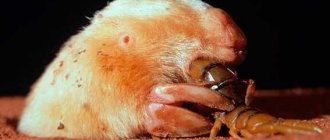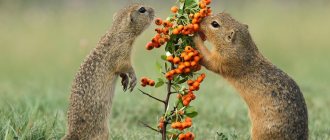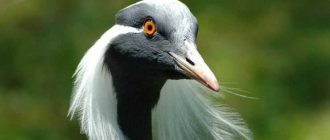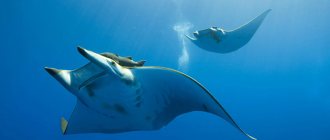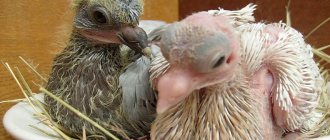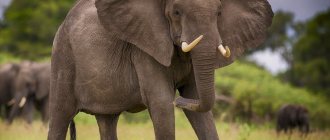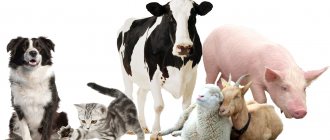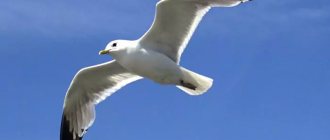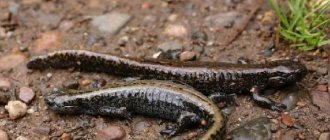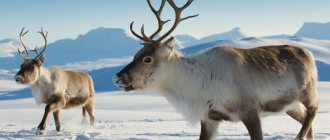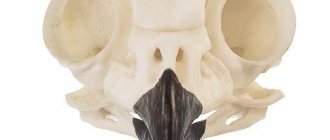Marsupials (Marsupialia) are a large group (infraclass) of mammals that are united by a unique method of reproduction.
The indigenous peoples of America and Australia have known marsupials for a long time, but the rest of the world learned of their existence only in the 16th century. The first marsupial seen in Europe was the Brazilian opossum. In 1500, the traveler Vincent Pinzón brought it as a gift to the Spanish Queen Isabella. And only three centuries later, zoologists came to the conclusion that marsupials are not deviant rodents, but a separate group of mammals that differs from placental, or higher animals, in features of anatomy and reproduction.
Where do marsupials live?
Marsupials are widespread in the Americas and dominate Australia and surrounding regions. Two species of couscous are found in Sulawesi (Indonesia), one in the Solomon Islands, and the others are endemic to islands in the Banda, Arafura, Coral, Timor and Solomon seas.
Marsupials of Australia and Oceania are more diverse than their American counterparts (represented mainly by opossums), and often occupy ecological niches similar to those occupied by placental mammals elsewhere. They use all terrestrial habitats - from deserts to rain forests and highlands.
Modern marsupials make up only about 7% of the world's mammal fauna.
Classification
Marsupials are classified in the following taxonomic hierarchy:
⇒ ⇒ ⇒ ⇒ ⇒ ⇒ Marsupials
Marsupials are divided into two modern superorders and seven orders:
- Superorder American marsupials (
Ameridelphia )
- there are about 100 species of marsupials living today. American marsupials are the older of the two living groups, meaning that members of this group migrated to Australia and diversified. The superorder Ameridelphia
is subdivided into the following two orders: Order Possums (
Didelphimorphia
); - Order Caenolesta ( Paucituberculata
).
- Superorder Australian marsupials (
Australidelphia )
- there are more than 200 species of Australian marsupials living today. Members of this group include Tasmanian devils, marsupial anteaters, bandicoots, wombats, marsupial moles, pygmy possums, koalas, kangaroos, wallabies and many other species. Australian marsupials are divided into five orders: Order Microbiotheria ,
found in South America; - Order Marsupial moles ( Notoryctemorphia
); - Order Carnivorous marsupials ( Dasyuromorphia
); - Order Bandicoots ( Peramelemorphia
); - The order Two-incisor marsupials ( Diprotodontia
) includes most of the modern marsupial species.
Marsupials are animals that give birth to premature babies. After birth, the cubs are still very tiny and cannot exist independently, their limbs are not yet fully formed, and there is no hair on their body. Therefore, after birth, they develop inside the pouch, located on the mother’s body in the form of a leather pocket.
Structural features of marsupials, photo
The appearance of modern marsupials is very diverse. These can be either slender animals with long hind legs or squat animals with short limbs. Their sizes range from small to medium (body length from 4 to 160 cm). The hairline of all representatives is well developed. Many have a long tail, sometimes prehensile.
In the photo below, the largest marsupial is the red kangaroo, and the smallest is the northern marsupial mouse.
Red kangaroos (Macropus rufus)
Northern marsupial mouse (Planigale ingrami)
One of the structural features of the skeleton is the presence of suprapubic or marsupial bones, which protrude in front of the pelvis and help support the abdominal wall and brood pouch. The bursa is a special skin device on the abdomen for bearing underdeveloped young in females.
Most species have a pouch, except some terrestrial ones. Sometimes a rudimentary bursa is formed by folds of skin on each side of the mammary region - it protects the attached young (for example, in the mouse-like opossum, marsupial martens).
Marsupial mouse and its young
The deepest pouches, completely covering the nipples, are usually found in those species that actively jump, climb or dig. Pouches that open forward are usually found in species with small litters of 1-4 young. Burrowing and burrowing species are characterized by pouches that open backwards (bandicoots, wombats).
Mother kangaroo and her baby in a safe shelter - a bag
In wombats, the pouch opens backwards
The skull of marsupials usually has a large facial part and a small brain part. There is often a sagittal crest for attachment of the temporalis muscles that elevate the lower jaw, and the orbit and fossa for the temporalis muscles are connected, as in primitive mammals. There are often holes in the palate between the upper molars. The posterior part of the lower jaw is usually turned inward, unlike placentals.
Many species have more teeth than placentals. American opossums, for example, have 50 of them. Typically there are 3 premolars and 4 molars on each side of the upper and lower jaws. Marsupials that have 4 or more lower incisors are called multi-incisor. Double-incisor marsupials have only 2 lower incisors, which are usually wide and directed forward.
American opossum showing off its teeth
Variety of shapes
The table of mammal orders describes body structure, diet, and habitat.
| Squad name | Characteristic | Representatives |
| Primates | Live in trees, highly developed brain, social animals, omnivores, developed limbs (five-fingered, grasping), nail plates on the tips of the fingers | Gorilla, orangutan, chimpanzee, monkeys, lemurs |
| Insectivores | Small in size, muzzle elongated into a kind of proboscis, predominantly nocturnal activity, primitive brain structure | Muskrat, mole, shrew, hedgehog |
| Predators | Powerful jaw with pronounced fangs, large claws, large skull, developed muscles, large developed brain, varied body sizes | Family of cats, dogs, bears, mustelidae, |
| Chiroptera | The forelimbs have turned into leathery membranous wings, large ears, a light and strong skeleton, live in colonies, prefer a twilight lifestyle, a very large group | Bats, fruit bats |
| Artiodactyls | The feet have an even number of toes, each with a horny sheath (hooves), large animals that feed on plants and are divided into ruminants with a complex stomach structure and non-ruminants with a simple stomach | Ruminants - cow, ram, deer, giraffe Non-ruminants - pig, hippopotamus |
| Odd-toed ungulates | Odd number of fingers in horny sheaths (most often one), simple stomach, herbivores, large body size | Zebra, rhinoceros, donkey, horse |
| Lagomorpha | Very mobile, small in size, 2 pairs of incisors on the upper jaw, feed on plants | Pika, hare |
| Pinnipeds | Limbs in the form of flippers, a spindle-shaped body of a streamlined shape, a thick layer of subcutaneous fat, a developed brain, they hunt in water, reproduce on land, and feed mainly on fish. | Seals, walrus |
| Cetaceans | They live in water, the body is streamlined, without hair, the hind limbs are absent, the front limbs are turned into fins, a large flattened tail, a highly developed brain, | Blue whale, sperm whale, killer whale, dolphin |
| Rodents | Large incisors (1 pair), which are without roots, but grow throughout life, small animals, great fertility. | Mouse, squirrel, porcupine, guinea pig, rat, chinchilla, beaver |
| Partial teeth | Underdeveloped teeth or their complete absence, very slow metabolism, non-standard shape of the vertebrae. | Sloth, anteater, armadillo |
| Calloused | Two-toed large animals, soles covered with calloused seals, herbivores. | Camels, llamas |
| Proboscis | Very large body size, massive build, large ears, thick skin, the presence of a trunk, which is formed by a fused nose and upper lip, incisors are developed and modified (tusks). | Elephants |
| Lizards | They feed on termites and ants; their body is covered with scales and is of medium size. | Pangolins |
| Hexaptera | All limbs, tail and neck are connected by a leathery membrane, thanks to which they can fly between trees. | Caguanas |
| Sirens | Large lobed tail, underdeveloped limbs, semi-marine animals, herbivores. | Manatees, dugongs |
| Aardvarks | A small animal, long muzzle, elongated and large claws, diet consists of ants and termites. | Aardvark |
| Hyraxes | Thick body, legs like small hooves, feed on plants, live in groups, can run on vertical surfaces due to a substance secreted on the sole. | Daman |
Reproduction of marsupial mammals
The main difference between marsupials and other mammals is the structure of the reproductive system. In females, the egg descends into the paired uterus for fertilization. The two lateral vaginas correspond to the bifid penis of males. The egg cell is similar in shape and developmental features to the egg cell of reptiles and birds and is quite different from that of higher animals. And if the young of placental mammals develop for quite a long time inside the female’s body (in the uterus), then the young of marsupials are born in the early stages of development. For example, a female eastern gray kangaroo weighing about 30 kg after 36 days of pregnancy gives birth to a calf weighing only about 0.8 g.
The baby is usually born through the central canal, which is formed before each birth in most marsupials. In species such as the kangaroo and the proboscis-headed cuscus, the birth canal persists after the first birth.
Immediately after birth, the baby makes an amazing journey from the opening of the birth canal to the nipple area. Its forelimbs and head are more developed than the rest of the body, and the newborn climbs into the pouch using its forelimbs. And although the baby is blind, he accurately determines the location of the nipple and sucks on it. The nipple enlarges and forms folds in the mouth, as a result of which the baby remains securely attached to the nipple for 1-2 months, i.e. until his jaws are fully formed so that he can open his mouth and release the nipple. All this time, the baby is protected by folds of skin that cover the nipple area and form a pouch.
Evolutionary history.
In addition to the characteristics of reproduction, there are other differences between marsupials and placentals. The former do not have a corpus callosum, i.e. a layer of nerve fibers connecting the right and left hemispheres of the brain, and producing heat (thermogenic) brown fat in the young, but there is a special shell around the egg. The number of chromosomes in marsupials ranges from 10 to 32, while in placentals it usually exceeds 40. The two groups also differ in their skeletal and dental structure, which helps to identify their fossil remains.
The presence of these features, supported by persistent biochemical differences (amino acid sequences in myoglobin and hemoglobin), suggests that marsupials and placentals are representatives of two long-separated evolutionary branches, the common ancestors of which lived in the Cretaceous period ca. 120 million years ago. The oldest known marsupials date back to the Upper Cretaceous of North America. Their remains belonging to the same era were also found in South America, which was connected with the Northern Isthmus throughout most of the Cretaceous period.
At the beginning of the Tertiary period (about 60 million years ago), marsupials spread from North America to Europe, North Africa and Central Asia, but became extinct on these continents about 20 million years ago. During this time, they achieved great diversity in South America, and when it reconnected with North America in the Pliocene (ca. 12 million years ago), many species of possums penetrated north from there. From one of them came the Virginia opossum ( Didelphis virginiana
), which spread across eastern North America relatively recently - ca. 4000 years ago.
It is likely that marsupials came to Australia from South America through Antarctica, when these three continents were still connected to each other, i.e. more than 50 million years ago. Their first finds in Australia date back to the Oligocene (about 25 million years ago), but they are already so diverse that we can talk about a powerful adaptive radiation that occurred after the separation of Australia from Antarctica. Nothing is known about the early history of Australian marsupials, but by the Miocene (15 million years ago), representatives of all modern, as well as extinct, families appeared. The latter include several large herbivores the size of rhinoceros ( Diprotodon
and
Zygomataurus
), giant kangaroos (
Procoptodon
and
Sthenurus
) and large predators such as the lion-like
Thylacoleo
and the wolf-like
Thylacinus
.
Currently, marsupials of Australia and New Guinea occupy the same ecological niches as placentals on other continents. Marsupial devil ( Sarcophilius
) similar to wolverine; marsupial mice, rats and martens are similar to mongooses, weasels and shrews; wombat - woodchuck; small wallabies - for rabbits; and large kangaroos correspond to antelopes.
Marsupials
are mammals that give birth to premature offspring
. Marsupial cubs are born at an early stage of development and further develop inside a special bursa of the mother's skin. Most marsupials, with the exception of opossums, are native to the Americas. For millions of years Australia was isolated from the rest of the world. On other continents, marsupials gave way to placentals (mammals whose young fully develop in the womb) in the struggle for food and living space. Therefore, all of them, with the exception of , became extinct. But in Australia, marsupials had no rivals. The range of marsupials includes more than 250 species
.
Baby marsupials are tiny when born; they are blind and hairless. Their limbs are underdeveloped, but the babies crawl along the mother’s fur to her nipples. After a few months, the cubs leave the pouch, but may return to roost there until they reach one year of age. Marsupials eat plant and animal foods.
Carnivorous marsupials
- a number of small carnivorous marsupials, which include spotted marsupial martens, narrow-footed marsupial mice, numbats and Tasmanian devils.
Lifestyle
Among marsupials there are both terrestrial and arboreal lifestyles, and the water possum has adapted to life in the water. Most are nocturnal animals.
Koala is a marsupial adapted to an arboreal lifestyle.
Diet
Among marsupials there are herbivorous, predatory and omnivorous species. Some people prefer only one type of food. For example, the proboscis-headed cuscus specializes in nectar and pollen. Others, such as four-eyed opossums, are very picky eaters. Their diet includes fruits, earthworms, insects and small vertebrates.
Social life
Four types of social organization of marsupials can be distinguished. In the first case, the structural unit is an individual whose area partially overlaps with several other areas. Males have large ranges that include those of several females, and mating is promiscuous. This is how small opossums and the proboscis possum live.
In the second type, the structural unit is also an individual, but with limited overlap of areas. The male's area overlaps with the areas of 1-2 females, with whom only he can mate. This type of social organization is characteristic of leaf-eating tree species.
The third type is family associations that share a common, often protected, territory among themselves. Groups may consist of a monogamous couple and their offspring or a dominant male, several adult females and young animals. Marsupial flying squirrels and some possums live in groups.
The fourth type are families of large kangaroos. In this social organization, the structural unit is a group of heterosexual individuals. Mating in such groups is promiscuous, and access to females is based on the size and dominance of the males.
Communication
In the communication of marsupials, the main role belongs to hearing and smell. Thus, arboreal species use sound signals to communicate over distances of up to several hundred meters. Some, such as small gliders, may chirp or squeak, while others, such as the koala, may roar.
Scent communication is carried out by passively leaving urine and excrement, and small species actively mark using the secretions of the skin glands.
Since marsupials are mostly active at night, vision is not of great importance for them.
How long do marsupials live?
The lifespan of a kangaroo in the wild is about 25 years. Small marsupials live shorter lives than large species. The shortest age of all is some species of predators, which die at the age of 12 months. The exception is the mountain cuscus, which lives longer than all small mammals: a female in nature can live more than 11 years.
Falkland fox in the Red Book
The Falkland wolf was listed in the Black Book as a species that became extinct after 1500.
Main causes of extinction
From the beginning of the eighteenth century, Spanish farmers began raising sheep on the island. Domestic animals suffered from attacks by foxes that were found in the surrounding forests. As a result, predators began to be shot, and later poisoned with chemicals. Destruction was not difficult, since the foxes did not hide.
In 1833, Charles Darwin visited Falkland Island. Already at that time, he drew attention to the fact that this species was endangered.
In 1839, a decree was issued that introduced some restrictions on the shooting of predators, but since valuable fur was in demand, the population declined. 43 years after Darwin visited the island, the last representative of the species was destroyed. After 1846 they were not seen again.
Is there potential for a revival of the species?
The Falkland Islands are almost completely inhabited by people. And there is no hope that at least a few representatives of this species have survived in nature.
The Falkland fox is considered not extinct, but a completely exterminated species. Animals have disappeared from the face of the planet due to human actions. People created conditions in which foxes could not survive.
Bandicoots (Peramelemorphia)
Bandicoots (Peramelidae)
David's bandicoot (Echymipera davidi) is an endangered species
Giant bandicoot (Peroryctes broadbenti) - endangered species
Rough-haired bandicoot (Perameles bougainville) - vulnerable species
Golden bandicoot (Isoodon auratus) - vulnerable species
Desert bandicoot (Perameles eremiana) - extinct species
Tasmanian bandicoot (Perameles gunnii) - vulnerable species
The Ceramian or Seramian bandicoot (Rhynchomeles prattorum) is an endangered species
Rabbit bandicoots (Thylacomyidae)
Rabbit bandicoot (Macrotis lagotis) - vulnerable species
Lesser rabbit bandicoot (Macrotis leucura) - extinct species
Pig-footed bandicoots (Chaeropodidae)
Pig-footed bandicoot (Chaeropus ecaudatus) - extinct species
